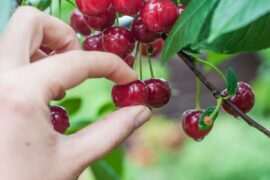Discover the Significance of Birth Flowers: A Parent’s Guide to Blooming Celebrations
Hello there, wonderful parents! Are you ready to add an extra sprinkle of magic to your family’s birthday celebrations? Well, you’ve come to the perfect place! Today, we’re diving into the colorful and fragrant world of birth flowers, the floral emblems that represent each month of the year. Not only can these blossoms make your birthday gifts more special, but they can also become a cherished part of your family traditions. So, grab a cup of your favorite warm beverage, and let’s explore this bouquet of knowledge together!
What Are Birth Flowers?
Just like gemstones, each month has its own unique flower that carries a specific meaning and history. These flowers are often given as gifts to celebrate someone’s birth month, symbolizing various qualities and sentiments. From the dainty snowdrop of January to the festive holly of December, each bloom has a story to tell.
Birth Flowers and Their Meanings
One of the loveliest aspects of birth flowers is the meanings associated with them. Whether it’s love, happiness, prosperity, or strength, every flower boasts a significance that can beautifully convey your wishes to the birthday person. Let’s begin our floral journey with a look at some of these lovely flowers:
- January: The snowdrop and carnation. Snowdrops symbolize hope and beauty, while carnations offer love, fascination, and distinction. What better way to start off the year than with a message of optimism and deep affection?
- February: The violet and primrose. Violets represent loyalty, faithfulness, and wisdom, as they brave the chill of winter. Primroses signify young love and the feeling that you can’t live without someone—a truly romantic gesture for February babies.
- March: The daffodil, a beacon of rebirth and new beginnings. With the start of spring, daffodils remind us that every year brings fresh opportunities and joy.
Incorporating Birth Flowers in Family Celebrations
Now that you’re familiar with the background of these flowers, it’s time to get creative and incorporate them into your family’s birthday traditions. How about a flower-themed birthday party for your little one with decorations inspired by their birth flower? Or an annual family photo with everyone holding that month’s bloom? The possibilities are as endless as they are delightful!
Stay tuned, as in the following sections, we’re going to delve deeper into each month’s flower, find out how you can use birth flowers to create personalized gifts, and look into the fun ways of teaching your kids about this sweet tradition. Together, we’ll turn every birthday in your family into a vibrant and meaningful flower-filled festivity!

Five Things Parents Should Know About Birth Flowers
Embarking on the journey of floral tradition calls for some essential insights! Here’s what you need to know to prepare for the blooming adventure ahead:
1. Every Flower Tells a Story
Understanding the symbolism behind birth flowers can truly enrich the gifting experience. For example, gifting April’s daisy or sweet pea can express purity, innocence, or blissful pleasure. Dive into the lore and meanings to give your presents more depth.
2. Birth Flowers as Educational Tools
Introducing birth flowers to your kids can be fun and educational. It’s an ideal way to teach them about the cycles of nature, the importance of plants in our ecosystem, and the diversity of floral species. Turn it into a craft session or storytelling time!
3. Birth Flowers are Seasonal
Remember, birth flowers are closely tied to seasons. Some may not be readily available at your local florist, especially if they’re out of season. However, there’s always the option of beautiful artificial or silk flowers as a lasting alternative.
4. Customizable Celebrations
Birth flowers offer personalization in celebrations. You can have cakes decorated with edible flowers representing the birth month, or create DIY decorations for a themed birthday party. It adds a unique and personal touch that’s both meaningful and memorable.
5. Starting Family Traditions
Incorporating birth flowers into family traditions fosters a sense of belonging and identity. Whether it’s planting the birth flower on one’s birthday each year, or creating a birth flower garden as a legacy, the traditions you start will bloom for generations.
The Comprehensive Birth Flower List
Ready to be the best petal-picker out there? Here’s a detailed guide to the rest of the year’s birth flowers and their meanings:
- April: Daisy and sweet pea. Daisies signify innocence and simplicity, while sweet peas are associated with goodbye or blissful pleasure. They make a joyful, cheerful statement for all the April-born darlings.
- May: Lily of the valley and hawthorn. These flowers speak of sweetness, humility, and returning happiness. They’re perfect for celebrating the warmth and growth that May brings.
- June: Rose and honeysuckle. Roses need no introduction as the emblem of love and appreciation. Honeysuckle’s sweet fragrance and connection to bonds of love make it a heavenly pick for June babies.
- July: Larkspur and water lily. The larkspur, with its variety of color meanings from pink (fickleness) to white (joyful), combined with the serene water lily, brings tranquility and grace to July celebrations.
- August: Gladiolus and poppy. Gladiolus symbolizes strength of character and integrity, while poppy (depending on the color) can represent imagination, eternal sleep, or even pleasure. They convey a message of moral fortitude and imaginative charm for August borns.
- September: Aster and morning glory. Asters represent wisdom, valor, and faith; morning glories are symbols of unrequited love and longevity. These flowers help express complex emotions and intellect for September birthdays.
- October: Marigold and cosmos. The marigold’s bright colors hint at warmth and creativity, whereas the cosmos’s orderly beauty talks of harmony and peace—a vibrant yet peaceful juxtaposition for October’s children.
- November: Chrysanthemum. A symbol of joy and optimism, the chrysanthemum’s different colors can convey loyalty, love, or even mourning. It’s a versatile flower fitting for the different shades of November personalities.
- December: Holly and narcissus. Holly’s association with foresight and protection align beautifully with the festive nature of December. The narcissus, often linked to good wishes and wealth, offers a hopeful outlook for the coming new year.
Personalized Gifting with Birth Flowers
Gifting gets a new dimension with birth flowers. Personalize jewelry with flower motifs, commission custom artwork, or simply present a beautiful bouquet. Adding this personal touch shows thoughtfulness and creates an instant connection.
Fun Ways to Teach Kids about Birth Flowers
Children love hands-on activities, and what better way than planting their own birth flower? If space is limited, simple crafts such as coloring pages or making paper flowers are fantastic alternatives. Use stories and fun facts to spark their curiosity about nature and the significance of these flowers.
Embarking on a Blooming Tradition
Now that we’ve planted the seeds of knowledge, it’s time for you to nurture them into full blossoming traditions. Birth flowers are more than just plants; they’re symbols of life’s precious moments, infused with the unique essence of each individual. So, let these flowery tokens inspire and bring joy to your family’s special days!
See more great Things to Do with Kids in New Zealand here. For more information see here
Disclaimer
The articles available via our website provide general information only and we strongly urge readers to exercise caution and conduct their own thorough research and fact-checking. The information presented should not be taken as absolute truth, and, to the maximum extent permitted by law, we will not be held liable for any inaccuracies or errors in the content. It is essential for individuals to independently verify and validate the information before making any decisions or taking any actions based on the articles.




